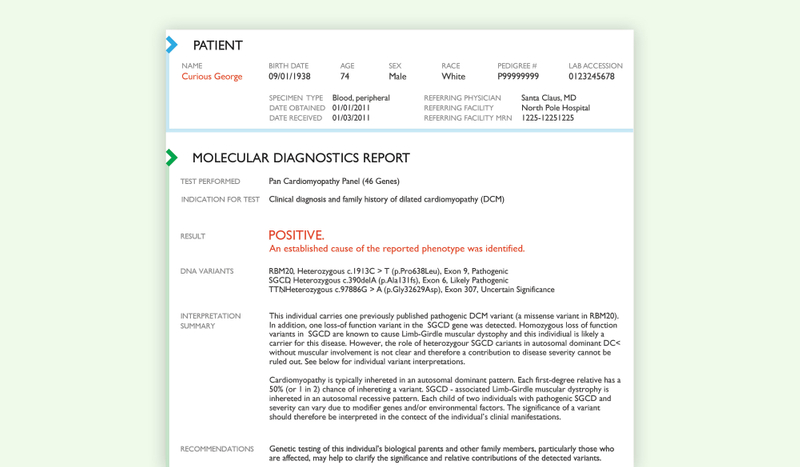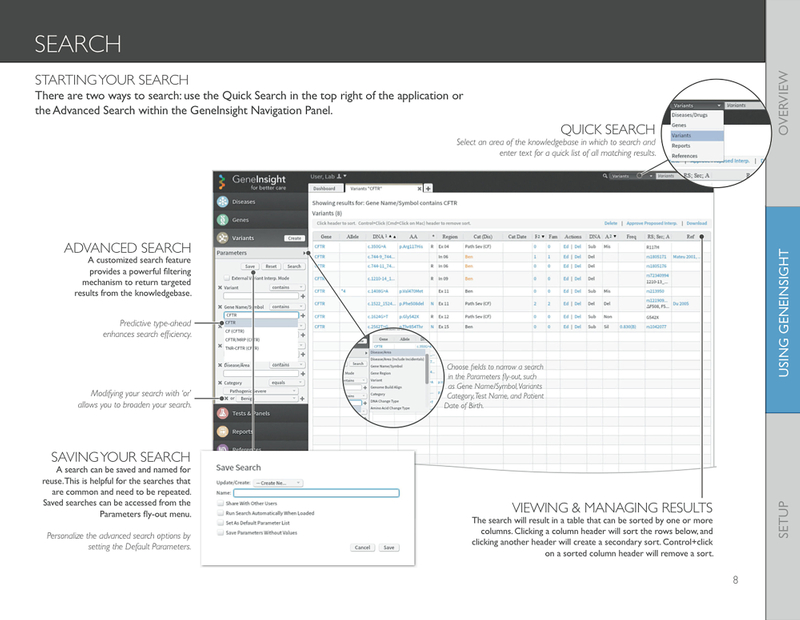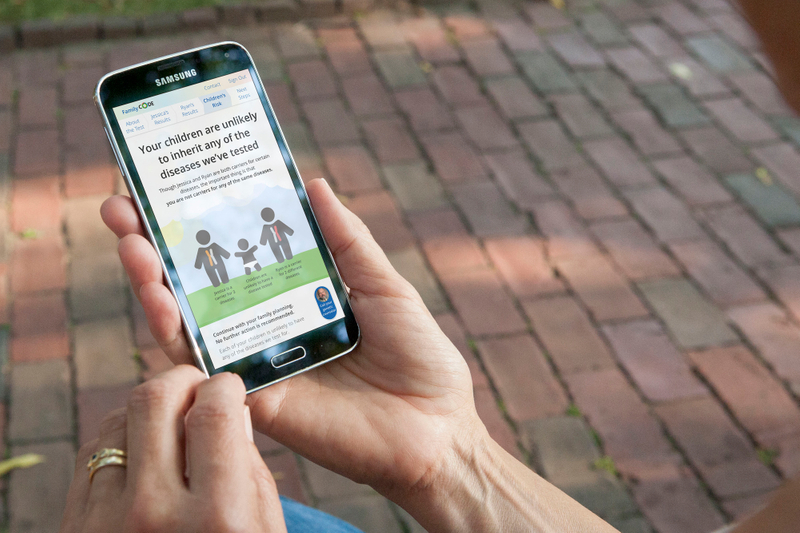
Connecting Clinics to Genetic Testing Labs
for Partners Healthcare
Problem
Partners Healthcare sought to move GeneInsight out of their closed lab, making it available commercially to clinicians. Though genomics is used increasingly in the clinical setting to inform clinical decisions or to provide precision care, genomic data isn’t easy to interpret, even for medical specialists.
Solution
GoInvo redesigned GeneInsight as a straightforward and elegant tool for clinicians to connect with laboratories, perform genetic analysis, receive reports on findings, and continue to receive updated on variants detected[^1].
Results
Partners Healthcare launched the GeneInsight Suite as commercial-grade software, used across multiple hospital systems in the United States.
Time: 2 designers over 4 months
Tags: Precision Medicine and Genomics
Process
To get a firm grasp on GeneInsight and its capabilities, we conducted usability reviews of the software used in labs. We met with more than two dozen key stakeholders to codify the product and user experience goals.
Insights
Capturing and categorizing the human genome
Genetic variants, mutations of the nucleotide sequence of the human genome, result in several different types of sequence changes —having no effect, altering the product of a gene, or preventing proper functioning. These variants need to be captured, cataloged, and validated via a globally-accessible variant database and vetting process. GeneInsight streamlined this process for laboratory technicians and genetic research scientists.
Patient genetic reports are a critical component
GeneInsight assisted clinical specialists in drafting patient-specific, molecular diagnostic test reports for geneticist review. In the previous version, reports were created based on a set of highly flexible, user-defined templates from the software’s extensive knowledge database. Composing a report consisted of lengthy, labor-intensive processes requiring advanced knowledge of the system and genetics. Interpretations, recommendations, and comments were more machine-readable than scannable and understood by a human.
Solutions
Drafting reports
Reports could be drafted using a template builder that reduced the number of clicks and density of information from the previous version. By reducing information overload and simplifying workflow into a handful of steps, geneticists could draft reports and deliver them more quickly to providers and patients.

Accessible reports
The updated data, layout, and emphasis encouraged faster and more informed decision-making. Clinicians could enter GeneInsight, locate their patient and download a specific report. GeneInsight’s template builder worded output reports clearly so that a provider would be able to sit down with their patient, walk through the results, and quickly make informed clinical decisions.

Ease of first-time and 100th-time use
With the opening of their services to outside clinics and labs, GeneInsight would be used by clinicians who aren’t as familiar with the tool as the lab techs who had been using it for years prior. To ensure the product would be straightforward for a first time user, a user manual would need to double as the beginner’s guide. An intuitive self-service model would ensure that beginners would be able to get help quickly, with helpful tips and straightforward explanations of workflows.
With accessible tools and reports at hand, more providers would be able to take advantage of the opportunities that genetic testing offers in delivering high quality, timely, and personalized care to their patients.


